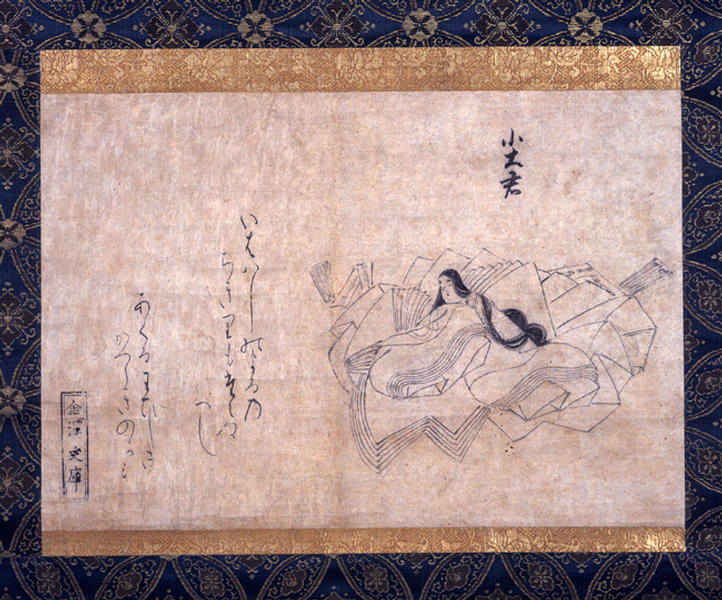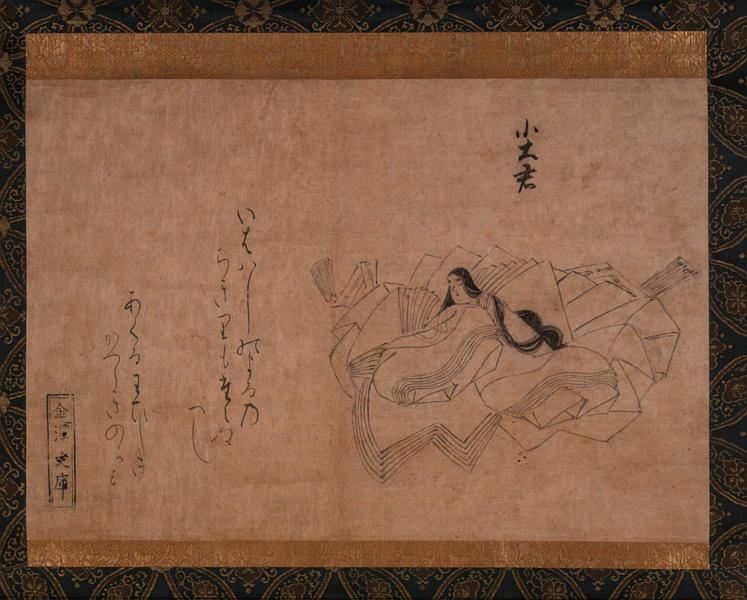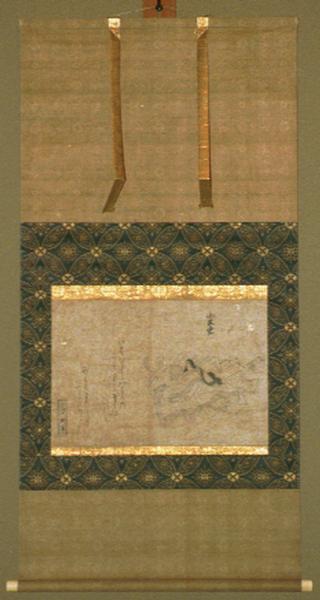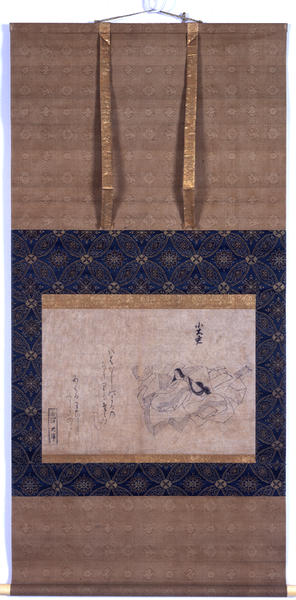Ko'ogimi, One of Thirty-six Immortal Poets, Tameie Version
- Kamakura period
- 14c
- Hanging scroll, ink on paper
- H-29.1 W-43.1
- Ex-owned by Kanazawa Bunko
Catalogue Entry
This work is an uncolored line drawing, taken from a scroll of the Thirty-six Poets. This image depicts Ko-ogimi, daughter of Emperor En'yu (r. 969-984), who served Emperor Sanjo (976-1017, r. 1011-1016) after he yielded his throne. Portraits of the thirty-six master poets began in the beginning of the 11th century when Fujiwara no Kinto (966-1041) compiled a collection of poems called Sanjurokuninsen (Selections from Thirty-six Poets), and painting these poets became quite popular during the time of prevailing interest in portrait painting.
The present work follows the tradition of yamato-e in that the subject is depicted with hikime-kagihana (slit eyes and a hook nose), but, at the same time, it embodies a taste for realistic portrait painting, especially in the treatment of her clothing, that was enormously popular at the time. Both the drawing and the calligraphy are attributed to Fujiwara no Tameie (1198-1275), the second son of Fujiwara no Sadaie (1162-1241), but proof is yet to be found. Line drawing places more importance on the expression of brush lines in contrast to suibokuga (ink paintings), which concern themselves more with expressing spatial planes. As a result, artists' abilities and emotional attitudes toward subject matter manifest themselves more easily through this type of line drawing. In the present work the lines expressing the layers of kimono brings about a peaceful and rhythmical melody to the subject.



